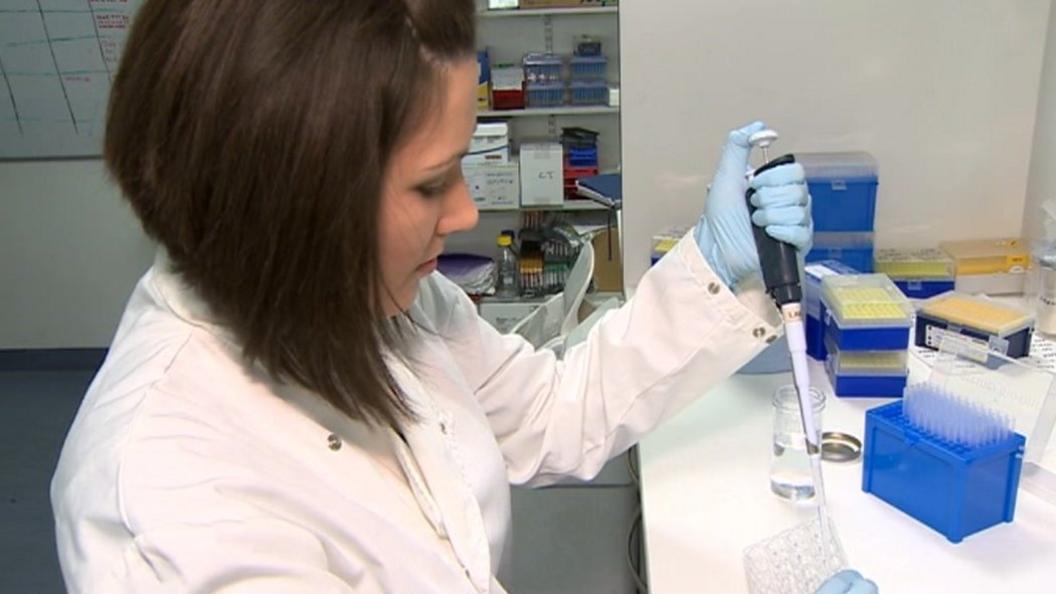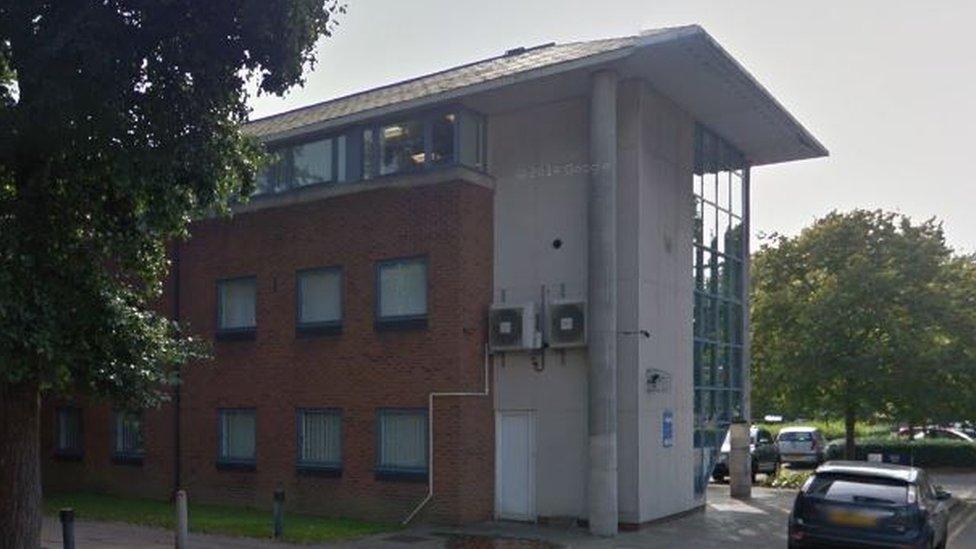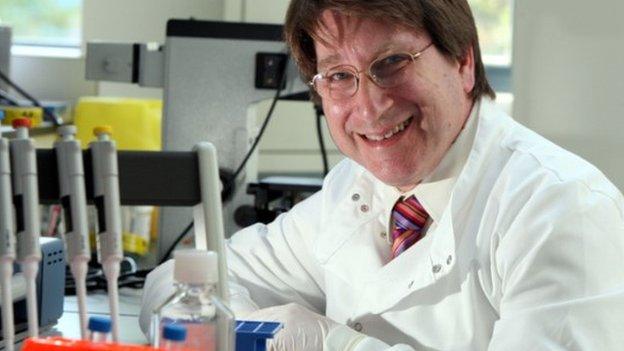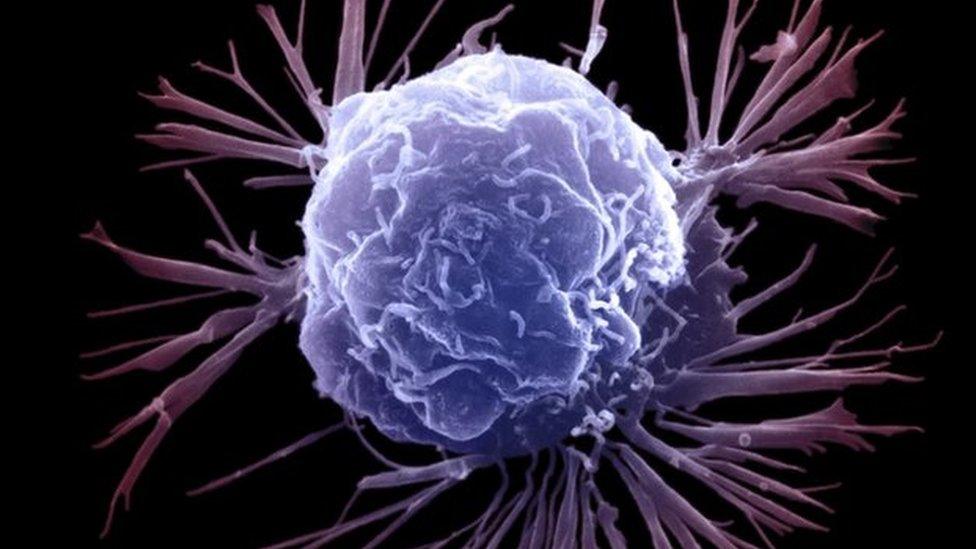Swansea Uni uses artificial intelligence to detect cancer
- Published

The computers use algorithms to learn what cells look like so it can detect them in samples from patients
University researchers in Swansea have trained computers to detect cancer cells using artificial intelligence algorithms.
Using similar technology to face and fingerprint recognition software, the computers have been taught to recognise cells and pinpoint them.
It means cancer cells can be identified quicker, speeding up diagnosis times.
The project is in collaboration with specialists in the US, Germany, London and Newcastle.
Prof Paul Rees, from the university's college of engineering, said in the past, finding cancer cells had been like "looking for a needle in a haystack" and the new method was a "world-leading development".
"The researchers train the algorithm to recognise the specific cell of interest by giving examples of the cell to be identified," he said.
"After learning what the cells look like, the computer algorithms can then identify the target cells in a population of previously unseen cells."
PHD student Lauren Blake said the new method has drastically sped up the process of cell detection
As well as making the cells easier to find, the new method can also determine a cell's age, which Prof Rees said was important because most treatments act on cells at a certain point within their lifecycle.
Researchers at Harvard University in the US, Helmholtz Zentrum Munchen in Munich, Germany, The Francis Crick Institute in London and Newcastle Upon Tyne University have also been involved in the project.
"These institutes are working at the cutting edge of the fight against cancer and they are very eager to have these types of tools," Prof Rees said.
"This development is very important for Wales - it shows that we are a player on the international stage."
Prof Dr Fabian Theis, of the Helmholtz Zentrum Munchen, added the team's work could "open up a whole new perspective that could also be used for entirely different research questions, not only for cell analysis".
- Published15 January 2016

- Published11 January 2016

- Published21 December 2015

- Published12 November 2015
